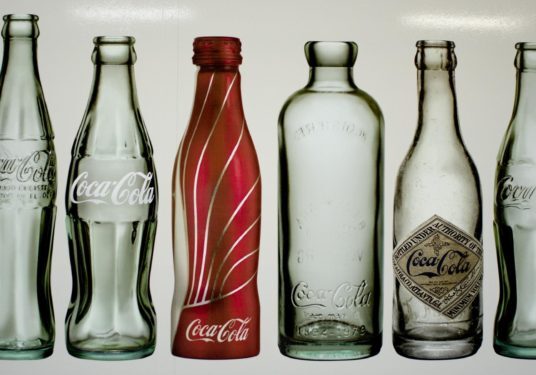Offset Lithography is a printing technique that uses printing plates to transfer the intended image to the intended medium, usually paper. Sometimes this technique is simply called offset printing, or litho. The printing plates are often made of aluminum, but can also be plastic, rubber, paper, or even other materials. The term offset refers to the fact that the image isn’t printed directly to the print material from the plates, but is offset (transferred) to another surface that then makes contact with the print material.
The offset lithography process works by first transferring an image photographically to the printing plates. Rollers then apply a thin layer of water to the plates before adding oil-based ink. Since oil and water don’t mix, the oil-based ink doesn’t adhere to the non-image areas of the plate. A plate is prepared for each color used. Four plates are used for the common 4-color process printing – one for cyan, magenta, yellow, and black (CMYK). The inked image is then transferred to a rubber blanket, that then transfers the image onto the print material as it passes between it and another cylinder beneath the product.
Offset lithography is popular because it is great at producing consistently high quality images, and is a versatile choice since it can be used for small or high volume print jobs, as well as print on flat surfaces of various textures.

How Decades of Solid Branding Saved Coca-Cola from the Pepsi Challenge
The Pepsi Challenge was a marketing campaign started in 1975. It was simply a blind taste test between Pepsi and Coca-Cola, touting that even Coca-Cola fans choose Pepsi. It was a wildly successful marketing strategy that they revisited for decades. Coca-Cola even ran their own private tastes test, through which they found Pepsi was indeed…

6 Reasons why a Strong Brand is Important for your Small Business
Building a strong brand is a critical component of any successful business. A well-crafted brand strategy not only helps businesses establish recognition and build trust with their customers, but also supports advertising efforts and inspires employees. Furthermore, strong branding can increase a business’s financial value and generate new business opportunities through word-of-mouth referrals. As the…

Flexible vs. Fixed Agency Pricing
Understanding the Key Advantages of Selecting a Digital Agency with Flexible Pricing vs. a Traditional Agency with Fixed Pricing. When it comes to selecting an agency meant to augment a marketing team or department, it’s critical to understand the limitations pricing models create or eliminate. Businesses must find an agency partner that understands their brand’s…

8 Signs You Need to Update Your Brand
In today’s ever-changing business landscape, it’s important for companies to continually assess and update their brand to remain relevant and competitive. A brand is more than just a logo; it’s the perception that customers have of your business. Therefore, if your brand is outdated or suffering from negative perceptions, it’s time to re-evaluate and refresh…

6 Benefits of Choosing a Local Agency
When it comes to branding and marketing, choosing the right agency is crucial. While larger global agencies may seem like the obvious choice, working with a local agency can provide unique benefits that can make a big difference in the success of your branding efforts. In this article, we’ll explore six key reasons why working…

Why Colors Matter
Choosing the right colors for your brand is a crucial step in building a strong and effective visual identity. While color preference is subjective, certain colors are associated with specific traits or emotions that can influence how your brand is perceived by your target audiences. Understanding color psychology and its impact on branding can help…

Why It’s Important To Have A Brand Promise
In today’s fast-paced and ever-changing business landscape, it’s more important than ever for companies to establish a clear and compelling brand promise. A strong brand promise not only helps companies differentiate themselves from their competitors, but also sets expectations for customers and helps build trust and loyalty. According to Seth Godin, a marketing expert and…

4 Things to Consider When Embarking on a Rebrand
Your brand is the foundation of your business. It communicates who you are, what you do, and why you do it. But what happens when your brand no longer aligns with your business goals or fails to resonate with your target audience? This is where a rebrand can come into play. A rebrand can help…

